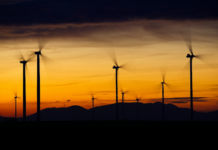In recent years, green energy initiatives in the United States have been gaining unprecedented momentum, poised to reach a pivotal tipping point. Since 2013, the nation has witnessed a remarkable surge in the production of solar, wind, and geothermal power, surpassing three times the output of a decade ago.
This remarkable growth extends across all 50 states, signaling a widespread commitment to sustainable energy solutions. Furthermore, the Biden Administration has demonstrated its dedication to this cause by allocating a substantial $300 billion in Inflation Reduction Act funds specifically earmarked for green energy initiatives.
- As the nation faces pressing environmental challenges and strives for energy independence, these developments signal a promising shift towards a more sustainable and eco-friendly future.
According to EnvironmetAmerica, here are the topline findings in wind and solar energy production in the United States: - The United States produced enough wind energy to power nearly 41 million typical homes in 2022 – 2.6 times as much wind energy as in 2013.
- The U.S. produced enough solar energy to power 19 million homes in 2022 – nearly 12 times as much solar energy as in 2013.
- The U.S. had 8.9 gigawatts of battery energy storage at the end of 2022, 60 times as much as in 2013 and 85 percent more than at the end of 2021, helping to support the use of more renewable energy and keep the lights on during extreme weather and times of grid stress.
- Energy efficiency improvements installed in 2021 will save 300 terawatt-hours of power over their lifetimes – enough to power 28 million homes for a year. Energy efficiency savings increased by about 20% between 2013 and 2021, the last year for which information is available.
- Americans bought more than 925,000 plug-in electric vehicles in 2022 – a more than 10-fold increase from 2013. Meanwhile, the number of electric vehicle chargers nationwide exceeded 151,000 – a nearly 18-fold increase from 2013.
- 14 states produce the equivalent of 30% or more of their electricity consumption from wind, solar and geothermal, up from just two states in 2013.
At current levels, solar and wind power generates enough electricity to power 60 million typical households. When you consider that there are an estimated 131.43 households in the United States, that’s a huge step toward clean energy and a reduced dependence on fossil fuels.
Our Top Solar and WInd Energy Stocks for 2024
Solar Energy: First Solar, Inc. (FSLR)
First Solar, Inc. (FSLR) is well-positioned to emerge as an industry leader in 2024 due to several strategic advantages.
As a leading manufacturer of thin-film photovoltaic modules, First Solar boasts a technology that is both efficient and cost-effective, offering a competitive edge in the rapidly evolving solar energy market. With a strong commitment to sustainability and a focus on reducing its carbon footprint, the company aligns with the growing global demand for clean energy solutions. Moreover, First Solar’s consistent innovation in solar technology, a robust project pipeline, and its expanding global footprint indicate a solid growth trajectory.
Its ability to navigate regulatory challenges and adapt to evolving market dynamics positions the company favorably as the world continues to shift toward renewable energy sources, making First Solar a prominent player in shaping the future of the solar industry in 2024 and beyond.
In a recent article, Reuters reported that First Solar plans to sell $700 million in Inflation Reduction Act (IRA) tax credits to payments firm Fiserv). These tax credits are designed to incentivize domestic production of clean energy products while reducing dependence on Chinese-made components.
TipRanks has issued a Strong Buy on FSLR, with 21 analysts issuing price targets between a low of $185 to a high of $275 by the end of 2024. The average price target is $230.68.
Wind Energy: General Electric (GE)
General Electric (GE) is well on its way to becoming a dominant player in the wind energy sector in 2024 due to its strong commitment to innovation, vast experience, and global presence. GE has been a pioneer in wind turbine technology for decades and has continually invested in research and development to improve the efficiency and reliability of its wind turbines. This dedication to innovation positions GE to offer cutting-edge wind energy solutions, making its products highly competitive in the market.
GE has a significant global footprint, with wind energy projects and installations in various countries around the world. Its expansive reach allows the company to leverage its expertise and provide comprehensive wind energy solutions, from turbine manufacturing to grid integration and maintenance services. This global presence not only enhances GE’s market share but also enables it to adapt to the diverse needs and regulatory environments of different regions, making it a versatile and adaptable player in the wind energy space.
Additionally, GE’s commitment to sustainability aligns with the increasing global demand for clean energy sources. As governments and businesses prioritize renewable energy to reduce carbon emissions, GE’s focus on wind energy positions it as a key contributor to achieving these sustainability goals.
With a combination of advanced technology, global reach, and a dedication to environmental responsibility, General Electric is poised to play a dominant role in the wind energy industry in 2024 and beyond.
TipRanks has issued a Strong Buy on GE, with 12 analysts issuing price targets between a low of $120 to a high of $150 by the end of 2024. The average price target is $140.18.
Conclusion
The potential for solar and wind power to supply the majority of American households with clean and sustainable energy within the next few years is increasingly promising. The renewable energy sector has seen remarkable growth and innovation, driven by advances in technology, declining costs, and a growing commitment to combating climate change. Solar and wind power offer a compelling solution to reduce greenhouse gas emissions, decrease reliance on fossil fuels, and transition towards a more sustainable energy future.
One of the key drivers of this potential lies in the rapid expansion of solar and wind infrastructure across the country. Investments in solar panels and wind turbines have become more affordable, making them accessible to a wider range of homeowners and businesses. Moreover, federal and state incentives, along with supportive policies, have encouraged the adoption of renewable energy systems. The growth of distributed energy resources, such as residential solar panels, has further empowered households to generate their own clean electricity and even sell surplus energy back to the grid, thereby reducing dependence on conventional energy sources.
Additionally, the scalability of solar and wind power generation makes them well-suited to meet the energy demands of American households. With continued advancements in energy storage technology, intermittent generation issues associated with renewables are being addressed. The ability to store excess energy during periods of high generation and deploy it when needed ensures a more reliable and consistent energy supply.
As we witness ongoing investments and commitment to clean energy solutions, there is a strong likelihood that a significant majority of American households will be powered by solar and wind within the next few years, contributing to a more sustainable and environmentally responsible energy landscape.



























